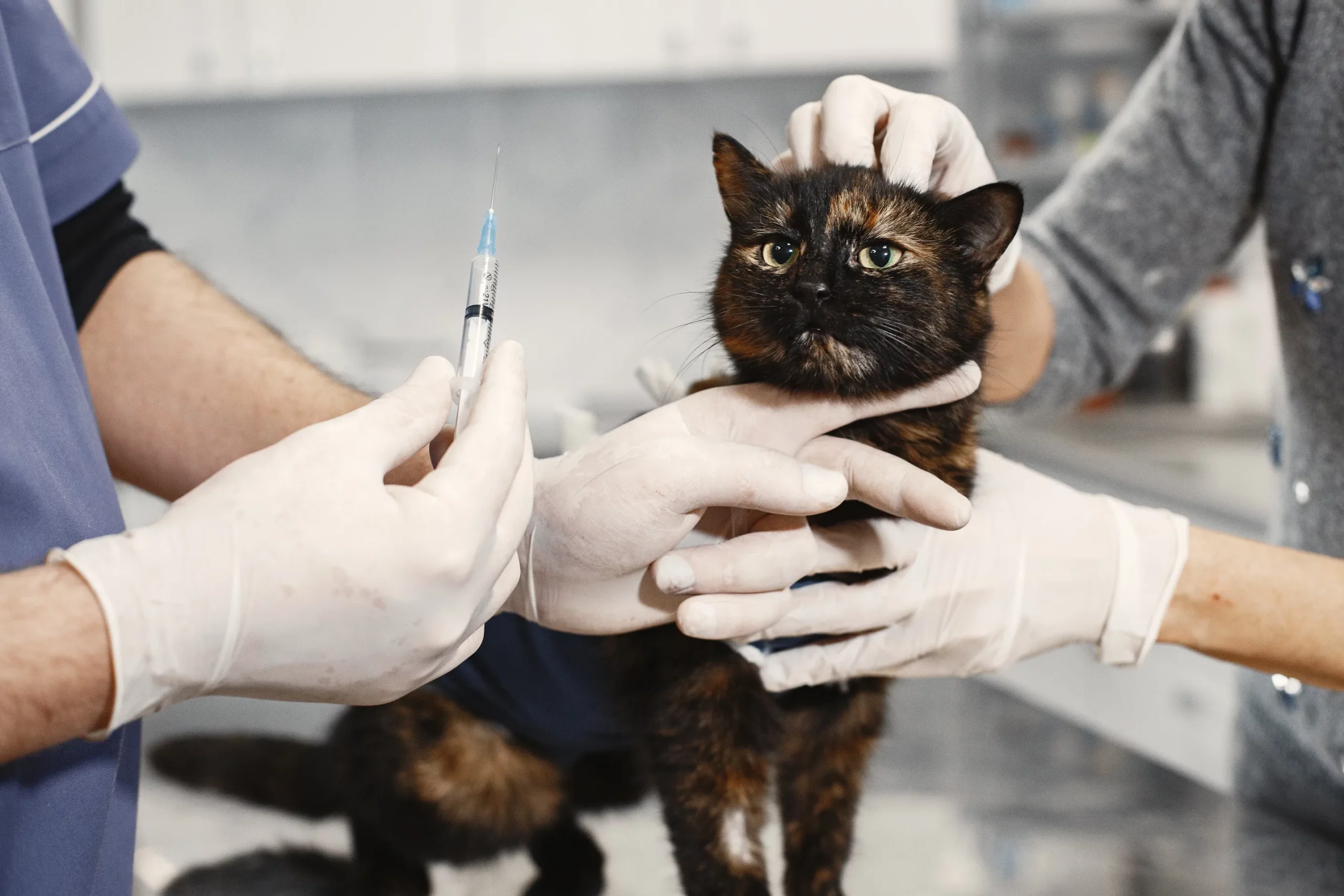Table of Contents
ToggleIf you are a cat owner in the UK, chances are you’ve had to deal with your feline friend’s urinary tract infection (UTI) at some point. These illnesses can be painful for your cat and costly to cure.
The cost of treating a cat’s UTI can quickly add up from vet visits and tests to medication and follow-up appointments. These illnesses can be painful for your cat and costly to cure.
In this post, I will look at the many elements contributing to the cost of cat UTI treatment in the UK and offer advice on managing these costs without jeopardizing your beloved pet’s health.
What causes a cat UTI?
Urinary Tract Infections (UTIs) are not exclusive to humans; cats can also suffer from this uncomfortable and potentially serious condition. So, what causes a cat UTI? Well, various factors can contribute to the development of UTIs in felines.
One common cause is a bacterial infection, often stemming from the E. coli bacteria that enter the urinary tract through the urethra. Another important factor is improper hygiene, as poor litter box maintenance or unclean water sources can increase infection risk.
Additionally, certain underlying health conditions may make cats more susceptible to UTIs. For instance, if a cat suffers from diabetes or kidney disease, its immune system may be weakened, making it less capable of fighting off infections effectively. Furthermore, obesity and urinary obstructions can strain a cat’s urinary system and increase the likelihood of developing UTIs.
UTI Symptoms of cat
Treating a urinary tract infection (UTI) in cats can be daunting, especially for pet owners residing in the UK. Being attentive and aware of the common symptoms indicating that your feline companion may have contracted a UTI is crucial.
These signs include frequent urination, often in small amounts, straining while urinating, blood in the urine, and even urinating outside the litter box.
Diagnosing a cat UTI
One innovative method veterinarians in the UK use to diagnose UTIs is a urine culture test. This involves collecting a sample of your cat’s urine and sending it to a laboratory where it is cultured to identify any harmful bacteria or other microorganisms present.
This procedure gives a more precise diagnosis than simply monitoring symptoms and helps vets personalize treatment for your cat’s needs.
Once diagnosed with a UTI, prompt treatment in the UK typically involves antibiotics prescribed by a veterinarian.
It’s important not to attempt self-diagnosis or treatment as this can lead to ineffective medication or worsen your cat’s condition. Remember that every cat is unique, and seeking professional advice ensures proper care tailored to your feline friend’s needs.
UTI treatment
Treating a urinary tract infection (UTI) in cats can be costly, especially in the UK. With veterinary bills skyrocketing and the cost of medications increasing every year, cat owners often find themselves burdened with unexpected expenses when their feline companion falls ill.
On the other hand, understanding the importance of early detection and seeking rapid treatment can help prevent complications and keep expenditures in check.
While several treatment options are available for UTIs in cats, it is essential to consult with a veterinarian to determine the most suitable course of action.
Antibiotics are commonly prescribed to combat bacterial infections that cause UTIs. These medications can range from relatively inexpensive generic drugs to higher-priced brand-name versions.
Additionally, supplementary treatments such as pain relievers or anti-inflammatory drugs may be required depending on the severity of the condition.
Preventing UTIs is also integral to minimizing treatment costs for cat owners in the UK. Promoting proper hydration by providing fresh water sources and feeding wet food can help reduce the incidence of UTIs by flushing out bacteria from the urinary tract.
Regular check-ups with your veterinarian can aid in detecting any underlying conditions that may predispose your cat to recurrent infections, enabling timely intervention and preventing unnecessary expenses down the line.
Cat UTI treatment cost in the UK
The cost of treating a UTI in a cat in the UK can vary significantly based on several factors. The severity of the infection is one element that influences the pricing.
A more severe infection may require multiple medications, additional tests, and possibly even hospitalization, leading to higher treatment costs. Another factor is the location of veterinary clinics. Treatment prices can differ between cities and regions due to operating costs and local demand variations.
Initial veterinary consultation
The initial vet consultation for your beloved cat is essential in getting them the proper treatment they need and can also be a significant cost.
On average, this consultation can range between £50 and £100, depending on location and veterinary practice. While this may seem quite expensive at first glance, it is essential to remember that this cost reflects the expertise and resources the veterinarian will bring forth during the appointment.
During the consultation, one of the crucial steps that your veterinarian will undertake is taking a comprehensive history of your cat’s symptoms.
This step helps narrow down potential causes and determine the appropriate course of action for treatment. Your veterinarian will inquire about any visible changes in your cat’s behavior or habits, the length and progression of symptoms, and any past medical illnesses or treatments your cat has had.
By thoroughly understanding your cat’s health background, the vet can accurately diagnose and provide practical recommendations tailored to your pet’s needs.
Cost of antibiotics
In the United Kingdom, the cost of antibiotics for treating a urinary tract infection (UTI) in cats varies based on the type of prescription provided.
Typically, a course of treatment for a cat UTI can range from around £150 to £200. However, it is essential to note that these are only rough estimates, and actual expenses may vary depending on factors such as the severity of the illness and veterinarian expenditures.
It is worth mentioning that shopping around for different veterinary practices and comparing prices can be beneficial.
Some clinics may offer discounts or promotions for pet owners who require long-term antibiotic treatment or have multiple pets requiring medication.
Exploring options such as pet insurance or local charity organizations that provide financial assistance in cases of high veterinary bills could also alleviate some of the cost burden associated with cat UTI treatments.
Hospitalization treatment
If your cat is diagnosed with a severe urinary tract infection (UTI), it may require hospitalization for proper treatment. While this can be a worrying time for owners, the cost of hospitalization is an important consideration.
The average daily cost of cat hospitalization for UTI treatment in the UK is around £500 per day. This price tag can initially seem relatively high, but when you understand what goes into providing top-quality care for your feline friend, it becomes clear why the costs are high.
When a cat has a severe UTI, it often requires intensive monitoring and medical interventions. The expenses cover the veterinary expertise and facilities such as diagnostic tests, medications, nursing care, and specialized equipment if needed.
Furthermore, during hospitalization, your cat will have access to round-the-clock care by trained professionals who can closely observe its condition and administer any necessary treatments promptly.
Conclusion
In conclusion, cat UTI treatment can be costly in the UK. Depending on the severity of the problem and the suggested treatment strategy, the typical cost of detecting and treating a feline urinary tract infection can range from £100 to £500.
Pet owners should be prepared for these expenses and consider investing in pet insurance or setting aside funds for their cat’s healthcare needs.
To lower the incidence of UTIs, it is also critical to prioritize preventative measures such as ensuring a balanced diet, frequent exercise, and access to clean water.

Dr. Usman Bajwa, a dedicated veterinarian with a passion for pets, brings years of expertise to the world of pet grooming. Through his blog, he shares valuable insights and practical tips to help pet owners provide the best care for their furry companions. With a focus on promoting the health and happiness of pets, Dr. Usman articles offer easy-to-follow guidance on grooming techniques. When he’s not writing, you can find him at his clinic or enjoying time with his own beloved pets.




